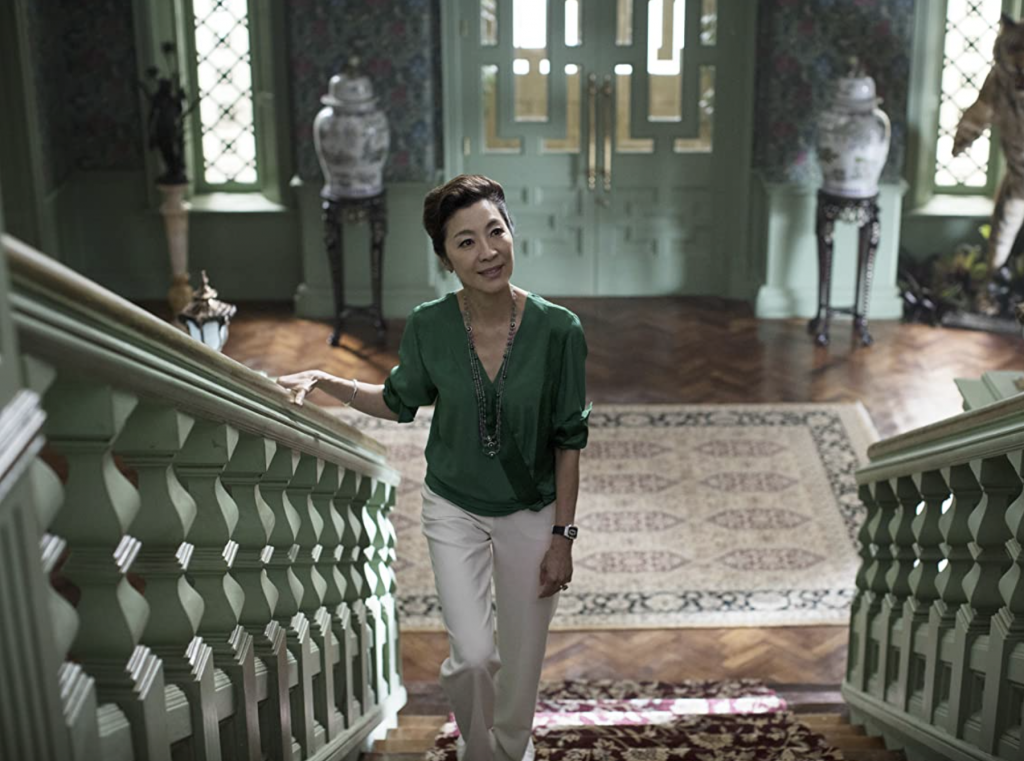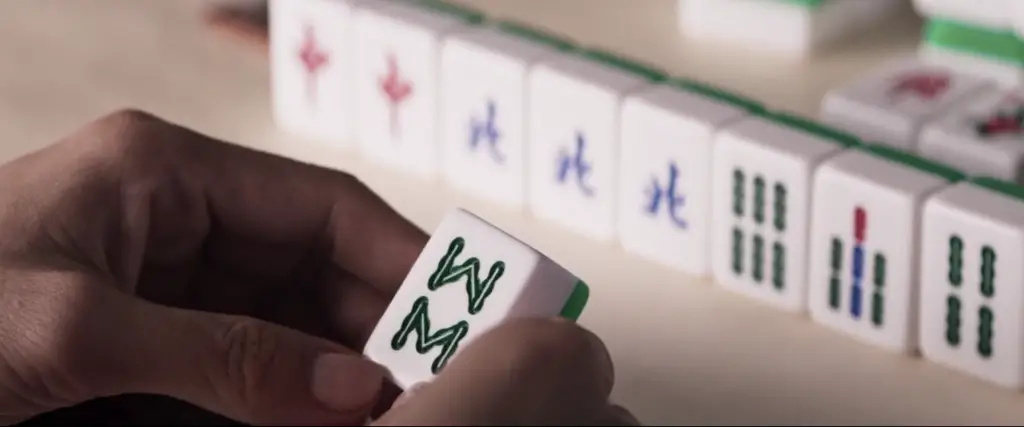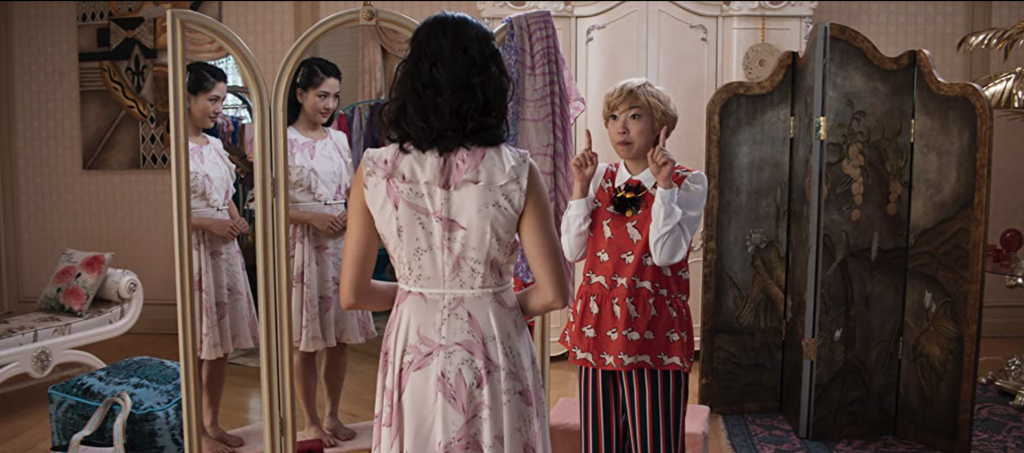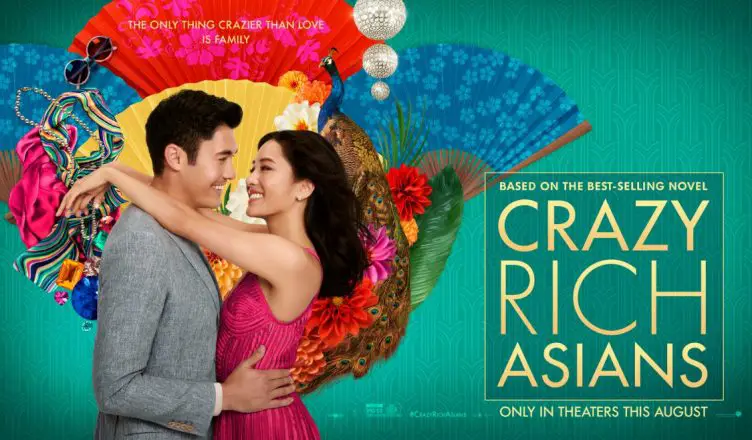Crazy Rich Asians
Director: Jon M. Chu
Written by: Peter Chiarelli, Adele Lim
Year: 2018
Country: USA
Find Crazy Rich Asians on Amazon
Crazy Rich Asians came out two years ago, which in 2020 feels at least a decade in the past. The film, based on Kevin Kwan’s novel of the same name, was a commercial success and cemented its place in cinema history as the highest grossing romantic comedy of the past decade. Article after article dominated the entertainment industry with conversation on the fully Asian cast and director, Jon M. Chu, with actors Henry Golding, Constance Wu, Awkwafina, and Gemma Chan rightfully taking their place as notable actors to watch. With all the fanfare and success of Crazy Rich Asians, it is perhaps more important now than ever to remember just how significant the film’s cultural impact was, and how this impact is all the more relative two years after its initial release.
The first scene of Crazy Rich Asians is undoubtedly one of its most impactful in regards to the film’s quintessential exploration of what it means to be Asian in a Eurocentric world, and nowadays feels all the more relevant when it comes to the rise of hate crimes against Asian people, namely Chinese people, amidst the Covid-19 pandemic. In the first scene, two Chinese women enter a fancy, high-end London hotel with two small children. It’s late at night and the group is soaked from the rain. Speaking in Mandarin, the matriarch of the Young family, Eleanor (Michelle Yeong) approaches the hotel lobby and switches to English. The hotel concierge and manager are instantly rude to Eleanor and end their conversation with casual racism by telling her that the hotel is full and to “explore Chinatown.” Eleanor exits back into the rain to make a phone call, and upon reentering the hotel, is greeted by the hotel owner. The owner lambasts the previously hostile concierge and presents Eleanor as “the new lady of the house”, as he has just sold the hotel to her family. It’s a triumphant moment, and even though Eleanor is presented later as the film’s villain, she never loses the icy coolness of the film’s arguably coolest girlboss.
Constance Wu’s character, Rachel Chu, is an Asian American economics professor at NYU. When her boyfriend, Nick Young, played by the devilishly handsome Henry Golding, invites her to attend his best friend’s wedding in Singapore, Rachel and her mother go shopping for a dress to wear to the event. The film’s primary conflict is introduced when Rachel’s mother admits her hesitation over her daughter’s exposure to real Chinese culture and the judgment that may come with it, seeing as Rachel was raised in the US and is disconnected to an extent from her heritage. Rachel naively dismisses the concerns, believing she is Chinese enough despite her inability to fully comprehend her mother’s first-generation perspective. This conversation speaks directly to the generations of Asian Americans, and any second-generation Americans, who live a life in two cultures, split equally between their parent’s native country and the country they were born or grew up in. Rachel really does believe that she knows what it means to be Chinese because it is a fundamental part of her identity in America.

Upon leaving for Singapore and flying in a luxurious first-class setup, Rachel finally learns the crazy rich part of the story: her boyfriend may be a fellow professor at NYU in America, but in Singapore, he’s one of the wealthiest heirs to the Young family fortune. He’s also attractive, something that the film takes great strides in portraying as girls circulate text messages swooning over him and badmouthing Rachel. This is where the rom com part of Crazy Rich Asians honors its genre with Henry Golding’s Nick as a perfect movie heartthrob. Not only is he kind and gentlemanly, he’s also well-educated and smart, an aspect of the film that is refreshing in its emphasis on how intelligent all of its title characters are.
Despite Rachel and Nick’s first-class plane ride, Rachel still miscomprehends just how wealthy Nick really is. Upon reuniting with her college friend, Peik Lin (Awkwafina), she finally finds out what wealth means for the Youngs in Singapore. Coming from Peik Lin and her family’s gaudy mansion with servants, the enormity of Nick’s wealth is put into comparison: in Kwan’s Singapore, there’s rich, and then there’s crazy rich. With the help of Peik Lin, Rachel is given a dress that meets the standards of the wealthy and is driven to the first grand party of the film. The setting of Crazy Rich Asians displays Singapore in all its glory – beautiful estates, lively city scenes, and gorgeous and remote tropical beaches. For his American audience, Chu’s cinematography feels deliberate in making the point that the east is not what western media portrays it as.
Rachel’s experience meeting Nick’s family does not go over well, and she leaves a rather unfavorable impression on Eleanor. Eleanor even goes as far as to privately show her her wedding ring, which had to be bought by Nick’s father because his grandmother would not give him the family ring due to such high disapproval of Eleanor. Eleanor explains the substantial sacrifices she has made for her family, and upon seeing Rachel in her son’s life, feels disdainful about her insufficiency. This cultural aspect of Crazy Rich Asians is partly true in portraying the amount of respect when it comes to the elderly and tradition within Chinese culture, but it also falls flat in casting Eleanor as a villain and Rachel as completely helpless. By creating this divide, the film slips slowly into the stereotype that Chinese customs are rigid and foreboding, and for a mostly clueless western audience, may give off the wrong interpretation of the culture. In addition, the bachelorette weekend for the bride ends with Rachel’s room being sabotaged by the other girls who call her a gold-digger, although this is more of an issue of classism than an issue of clashing cultures.

Rachel ends up being able to hold her own with the support of Peik Lin and her own intelligence. During the beautiful wedding scene of Nick’s best friend, she is able to prove herself by speaking with Malay Princess Intan about her article on microloans. Rachel’s intelligence gives her an edge against the age-old Hollywood stereotype of female love interests who are helpless and pretty. Moreover, Rachel is intelligent and Asian, something that no amount of whitewashing her character could have ever lived up to when it comes to the significance of representation. The film’s largest conflict between Rachel and Eleanor comes to its climax when Eleanor reveals to the family’s most important matriarch, Nick’s grandmother, that a private investigator has discovered that Rachel’s father was alive and his mother had an adulterous affair before fleeing to the US to give birth to Rachel. Fearing scandal, the two matriarchs demand an end to the relationship to the devastated Rachel, who was told her entire life that her father was dead. Rachel’s mother comes to Singapore to comfort a distraught Rachel and reveal the truth about her abusive relationship with her father.
Following this conflict, Nick seeks out Rachel and proposes to her, choosing her over his family and promising to leave Singapore in order to be with her. Rachel denies him and instead arranges to meet Eleanor at a mahjong parlor, where she reveals her side of the story. When telling Eleanor of Nick’s proposal and her refusal, she reminds her that Nick eventual marriage to someone of her standards will be because of Rachel’s sacrifice. Eleanor wins the mahjong game and Rachel leaves the parlor, revealing upon her departure that she knew what Eleanor’s winning tile was all along and allowed her to have it, a symbolic surrender that is artfully tied to the cultural significance of mahjong. The winning tile, the eight of bamboo, is another nod to Chinese culture, as it is considered the luckiest number and represents wealth and prosperity. The film ends on a happy note with Nick chasing down Rachel in the airplane right before she intends to depart and proposing to her with Eleanor’s ring, signifying a nod of respect to Rachel and finally, approval.

Nick and Rachel’s dynamic throughout the film feels genuine and is a refreshing representation of on-screen romance. Even the film’s side couples, such as Nick’s cousin Astrid and her estranged husband, is an important and fundamental portrayal of Asian love in film. Including Astrid’s marital discord gives the film some grit beyond being a rom com and provides Gemma Chan’s character an opportunity to be more complex beyond her wealth and beauty. For all of Crazy Rich Asian’s faux pas, such as the ditzy, oversexualized character of Kitty Pong (Fiona Xie) and Ken Jeong’s unnecessarily cringey character as Peik Lin’s father, the film still manages to create characters with variety, something that Asian characters are rarely offered in film representation. With only one percent of leading roles going to Asian actors, Crazy Rich Asians was flashy, undeniable proof that Asians can be just as Hollywood as their white counterparts, if not more. Knowing that pre-production attempts to whitewash Rachel’s character had to continuously be fought off makes the film even more of a triumph, and a reminder that for all the progress Crazy Rich Asians likes to portray, the reality is still far from all-Asian casts becoming the norm.
For a film with a cast like Crazy Rich Asians to harness success in such a demanding way was pivotal for Asian people, especially Asian Americans, who spent a loving amount of time watching and reviewing the film and discussing its impact for the Asian American diaspora. The film dedicated itself to two important factors – the first, a representation of Chinese culture without any overt stereotyping or viewer handholding, and the second, an exploration of what it means for the Asian American diaspora to feel equally connected and disconnected from their roots. Chu took deliberate care in making sure that cultural scenes were not overexplained or misrepresented, and set much of the film’s action amidst culturally relevant events, such as the family dumpling-making scene and Rachel and Eleanor’s mahjong game. For those who grew up making dumplings and eating them during important family events, this intimacy felt like a nod to those who truly understood it. Rachel’s relatability also stands out in this moment for those who identify with her – while she may not be familiar with all of the customs of a truly Chinese family, she did grow up with the Chinese culture, and she is deserving of participating in it all the same. Rachel furthers this argument in the pivotal mahjong scene with Eleanor. While the game play is combined with dialogue for viewers unfamiliar with the game rules, it also leaves a lot of nuances intact for those who are. The entire game is rife with symbolism, and set amongst the busy mahjong tables and the sound of tiles clinking, pays homage to a game that holds cultural significance and is often used as a reference into the calm practice of Chinese philosophy.

In the current political climate and amidst a global pandemic, Crazy Rich Asians feels like progress of the past that may be slipping away. Anti-Asian assaults and hate crimes have dangerously spiked in relation to fear-mongering over Covid-19, fueled by antagonizing comments from the current US president referring to coronavirus as the “Chinese virus” and stoking more fear and hatred towards an entire ethnic group. Crazy Rich Asians served as a starting point to combat western misrepresentation and misunderstanding, and was even able to spur more productive dialogue surrounding the myriad of ethnicities and races that make up the Asian umbrella beyond Chinese people. The hopefulness that followed the film’s release and success gave promise to a future with more prominent Asian stories in Hollywood that could offer options to so many who grew up only having Mulan as a reference for fictional representation.
Sadly, sequel rumors surrounding the second installment of the series, China Rich Girlfriend, have been increasingly vague, although it may prove worthy for a sequel to take its time instead of being rushed out the door to capitalize on the success of its predecessor. Adele Lim, screenwriter for Crazy Rich Asians, left the sequel due to an atrocious pay disparity between her and her white male counterpart, Pete Chiarelli (reportedly, starting offers for Lim was $110,000 and her counterpart’s $1 million). The sparkle and glamour of Crazy Rich Asians is fun to revisit and will always be a good story, but its fantasy is becoming more and more apparent amidst the inequalities of the film industry and the greater social climate as a whole. Nevertheless, it should serve as a beacon for what can be done for Asian actors and Asian stories, and a reminder that success is a sweeter prize when it comes with representation.
- Why “Crazy Rich Asians” Matters Now More Than Ever - December 21, 2020
